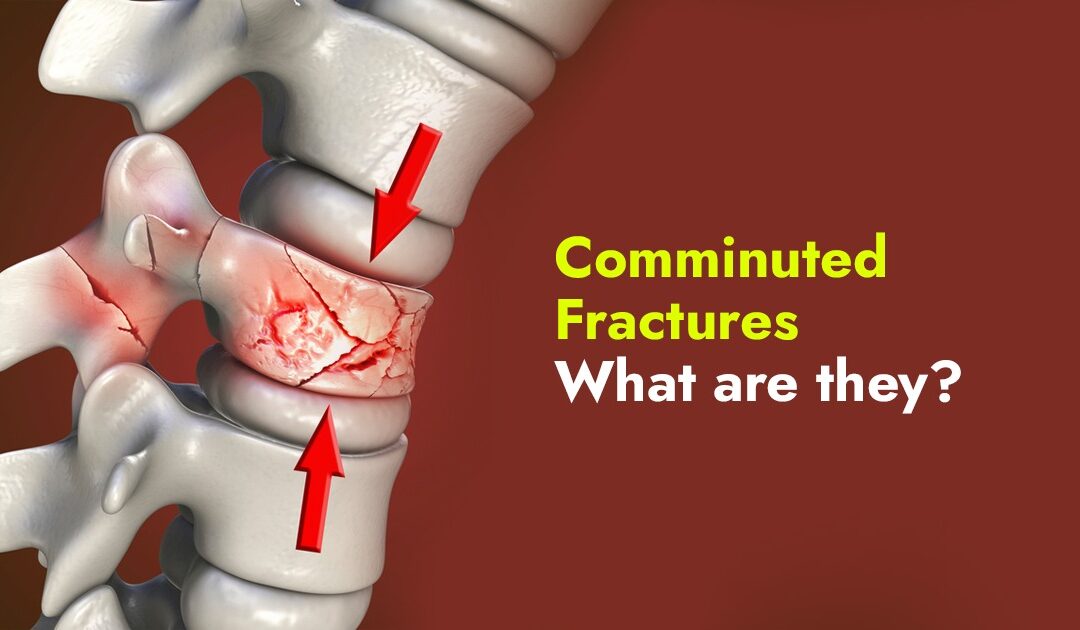Comminuted fractures are a form of fractured bone. A comminuted fracture occurs when a bone fractures into three or more pieces. Comminuted fractures are caused by significant traumas such as vehicle accidents. These often necessitate surgery and take longer to heal than other fractures.
These fractures can damage any large or long bone in the body. Common bones include:
- The Femur, or thigh.
- Tibia, or shin.
- The Fibula, or calf.
- Humerus, or upper arm.
- Radius and ulna, or forearm.
- Clavicle, or collarbone.
- Skull.
What symptoms indicate a comminuted fracture?
If you have a comminuted fracture, you will most likely feel severe symptoms from the underlying trauma. Your symptoms will vary depending on your other injuries. However, in general, the symptoms of a comminuted fracture may include:
- Intense pain.
- Difficulty moving a body part that you typically can.
- A component of your body is obviously different in appearance or location.
- Seeing your bone through the skin.
- Swelling.
- Bruising.
What causes a comminuted fracture?
Trauma leads to comminuted fractures. Some of the most common causes are car accidents and falls from extreme heights, such as from a ladder or roof. Any force on your bones can result in a comminuted fracture. Slips, falls, and other common causes of broken bones, on the other hand, seldom induce severe enough bone injury to result in a comminuted fracture.
How are these fractures diagnosed?
A physical examination and imaging tests will be used by your healthcare professional to diagnose a comminuted fracture. If you are admitted to the hospital after a trauma, this may be done in the emergency room.
What is the recommended treatment for a comminuted fracture?
Surgery can assist in reconnecting the bone fragments and ensure that the bone heals properly, preventing you from losing function in the damaged location, such as your arm or leg. Here are some of the surgical therapies a doctor may employ to treat a comminuted fracture.
-
Internal fixation:
During this technique, the doctor opens a region around the damaged bone to reattach the parts. They’ll use rods, plates, screws, pins, and wires to keep the bones together as they develop and heal.
-
External fixation:
For severe injuries that are not yet suitable for surgery, a doctor may put screws into fractured bones and attach them to a device, such as a brace, that wraps around the affected area. This device keeps the screws in place while the bone heals, as well as permits other internal injuries to heal.
-
Bone grafting:
A bone graft, which is tissue from one of your other bones, a donor, or artificial materials, may be used to replace seriously damaged bone that cannot be healed by surgery. Internal fixation may also be used to keep your new and existing bones together while they mend and mature.
To restrict your bones from moving too much while they heal, you will most likely need to wear a cast, brace, or splint. Depending on the severity of your injuries, you may have to wear this for several months or longer.
What are some complications that Comminuted Fractures can cause?
Complications associated with comminuted fracture surgery include:
- Acute compartment syndrome (ACS): A build-up of pressure in your muscles can prevent blood from reaching the tissues, resulting in lasting muscle and nerve damage.
- Malunion: Malunion occurs when your shattered bones do not line up correctly when healing.
- Nonunion: Your bones may not heal completely or at all.
- Bone infection (osteomyelitis): If you have an open fracture (the bone breaks through the skin), you are more likely to get a bacterial infection.
- Other internal injuries: Fractures can cause damage to your muscles, nerves, blood vessels, tendons, and ligaments.
Comminuted fractures are serious injuries, but with adequate medical care, you can recover and return to full function in the affected area. If you have a significant impact or suspect a comminuted fracture, get medical assistance immediately. Early diagnosis and treatment are critical for promoting recovery and avoiding problems. Remember that your doctor can diagnose and treat the fracture using a variety of ways, including surgery, casts, and physical therapy. By following their advice and prioritizing your rehabilitation, you’ll be well on your way to returning to your regular activities.

